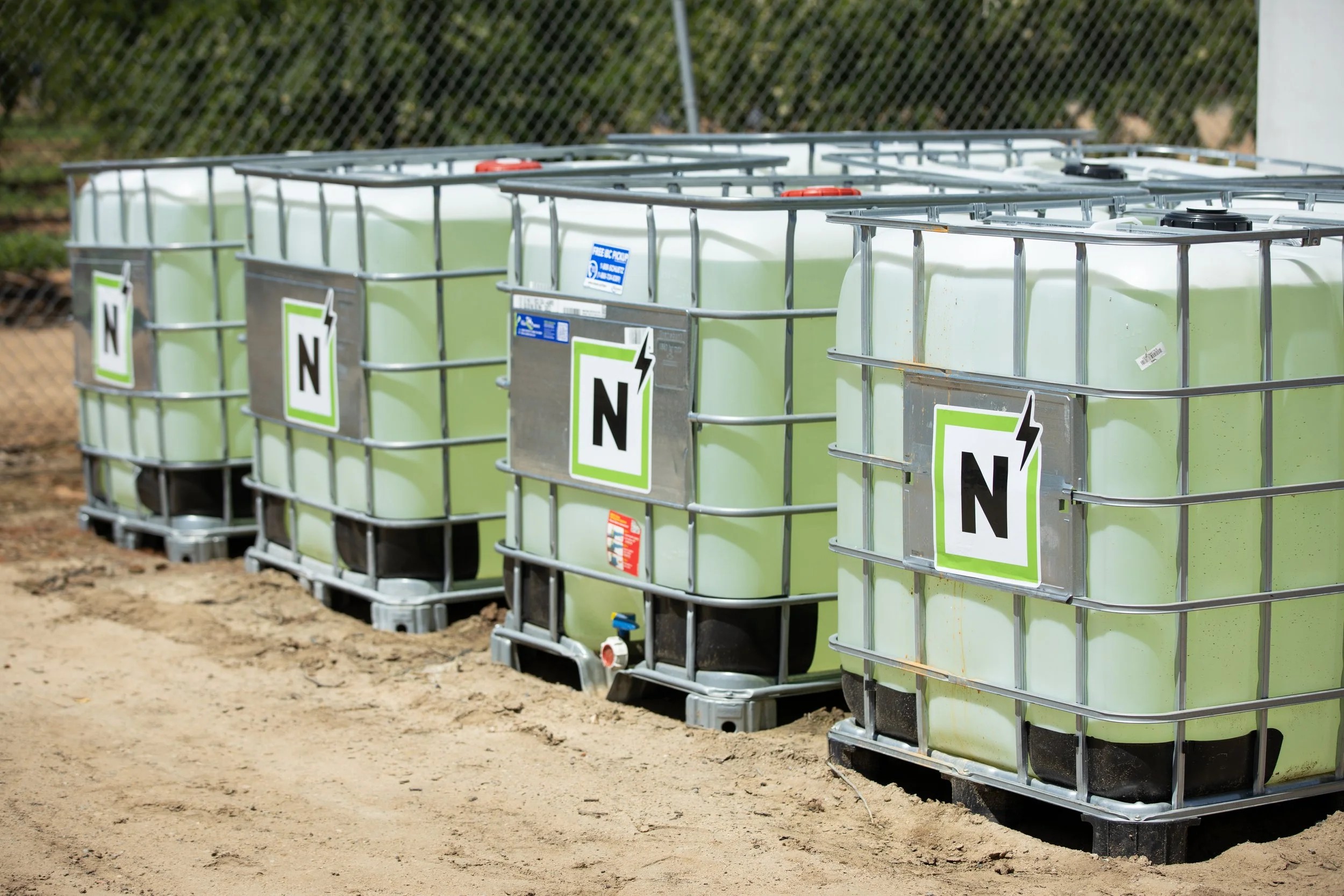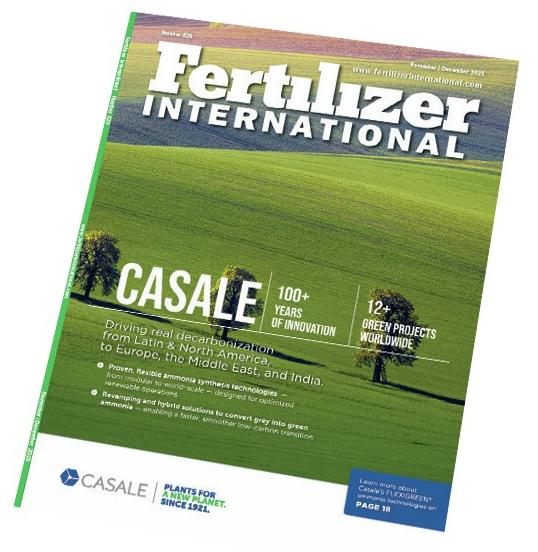Fertilizer International 506 Jan-Feb 2022

31 January 2022
Phosphogypsum recycling: good for the environment and the economy
INDUSTRY VIEWPOINT
Phosphogypsum recycling: good for the environment and the economy
Sarah Fedorchuk, Mosaic’s vice president, government and public affairs, North America, explains how recycling phosphogypsum from Florida can help America compete globally.

Creating a sustainable economy is going to require us to recycle more than just trash. How? By turning industrial by-products into new products, and so reduce the need to extract new raw materials from the earth. That’s sustainability – and, as explained here, it’s good for the environment and the economy.
Innovation and advocacy
The US-based Florida Phosphate Council is supporting these aims by launching the Phosphate Innovation Initiative.This advocacy campaign is helping the phosphate industry achieve its ambitious goal of a ‘zero waste’ future by targeting the sustainable and beneficial use of phosphogypsum. The new initiative – as well as presenting factual, science-based information on phosphate production – is highlighting opportunities for the beneficial use of its main by-product: phosphogypsum, also known as PG. The campaign also forms part of wider efforts by the phosphate industry to raise awareness about recent production innovations.
Florida’s artificial mountains – a valuable resource
Put simply, phosphate is an essential nutrient that keeps bodies strong and bellies full. When turned into fertilizer, it helps America’s farmers put food on tables across the globe. But the phosphate manufacturing process also generates large volumes of phosphogypsum as a by-product. This is currently stored in flattened pyramid-shaped structures called ‘gypstacks’.
Indeed, across Florida, more than one billion tons of phosphogypsum is stored in gypstacks. Furthermore, due to their size, the Sunshine State’s 25 gypstacks are a highly visible feature in central Florida’s low rise landscape. Yet recycling the PG contained within these artificial mountains also represents an incredible opportunity to reduce waste and boost resource efficiency.
How to recycle PG?
Today in the United States, phosphogypsum is approved for limited use in agriculture and scientific research. Globally, however, scientists have discovered 55 innovative ways to use PG – and that’s just so far. Numerous research trials confirm there are many environmentally-safe alternatives to storing PG in gypstacks.
Consequently, other countries are already capturing their phosphogypsum as a valuable raw material, having developed processes that allow its beneficial use. Across the world, PG has been used to help crops grow, replant forests, pave roads and even as a component of building materials (Fertilizer International 501, p45). More than 20 countries, including Canada and Japan, currently capture and reuse phosphogypsum, turning it into a valued resource. And, if they can do it, so can the United States.
It’s the NORM
Comic books may have led us to think of radiation as the sort of thing that turns regular humans into superhumans. Yet, in real life, low-level radiation is all around us, being present in everyday items. Decorative ceramic dinnerware, granite countertops in our kitchens and even bananas contain it. Radiation in this form is called NORM, short for naturally occurring radioactive materials.
The phosphogypsum produced from phosphate manufacturing, a production process that is common in Florida and so essential to food production, also contains low-levels of NORM. Yet expert scientists, including researchers at the University of Florida, have established that the risk associated with phosphogypsum is low, even for those working near or with PG daily. The science has also been extensively reviewed by the US Environmental Protection Agency (EPA). The Agency’s own analyses show that the maximum lifetime exposure to NORM — even for road construction workers —is well below the EPA’s risk threshold.
Recycling to help America compete globally
Gypstacks contain the rare earth elements (REE) used in countless technologies that make modern life possible, from automobiles and energy to smart phones and critical defence systems (Fertilizer International 504, p44). Scientists are currently developing methods to extract REE from Florida’s abundant phosphogypsum reserves. They estimate that more than 200,000 tons of REE are ready to be recovered and recycled, a resource that is being continuously added to by the extra tons of PG produced annually. Florida’s gypstacks could therefore provide an important domestic source of rare earths and reduce America’s reliance on foreign supplies.
Making gypstacks a thing of the past?
Importantly, when we recycle phosphogypsum, we keep it out of gypstacks, and create the conditions for a cleaner environment. Productive use of PG also reduces the need for phosphate manufacturers to expand or build new gypstacks. Valuably, fewer gypstacks in future will mean more land is available for conservation and for wildlife habitats.
Recycling also reduces our reliance on mining new minerals from the earth, so preserving important green spaces that would otherwise have been negatively affected by raw material extraction. There are even climate benefits, as using PG as a soil medium to regrow the world’s forests helps capture greenhouse gases like carbon dioxide (Fertilizer International 501, p45).
Innovative technological, economic and environmental factors have all combined together to influence the future of phosphogypsum in ways not foreseen thirty years ago. In our view, as Florida’s traditional phosphate operations continue to generate phosphogypsum, now is the time for the industry and regulators to embrace innovative ways of putting PG to beneficial use and, consequently, make gypstacks no longer necessary.






